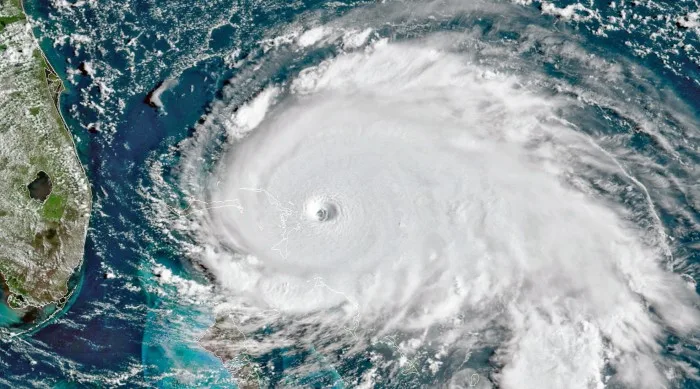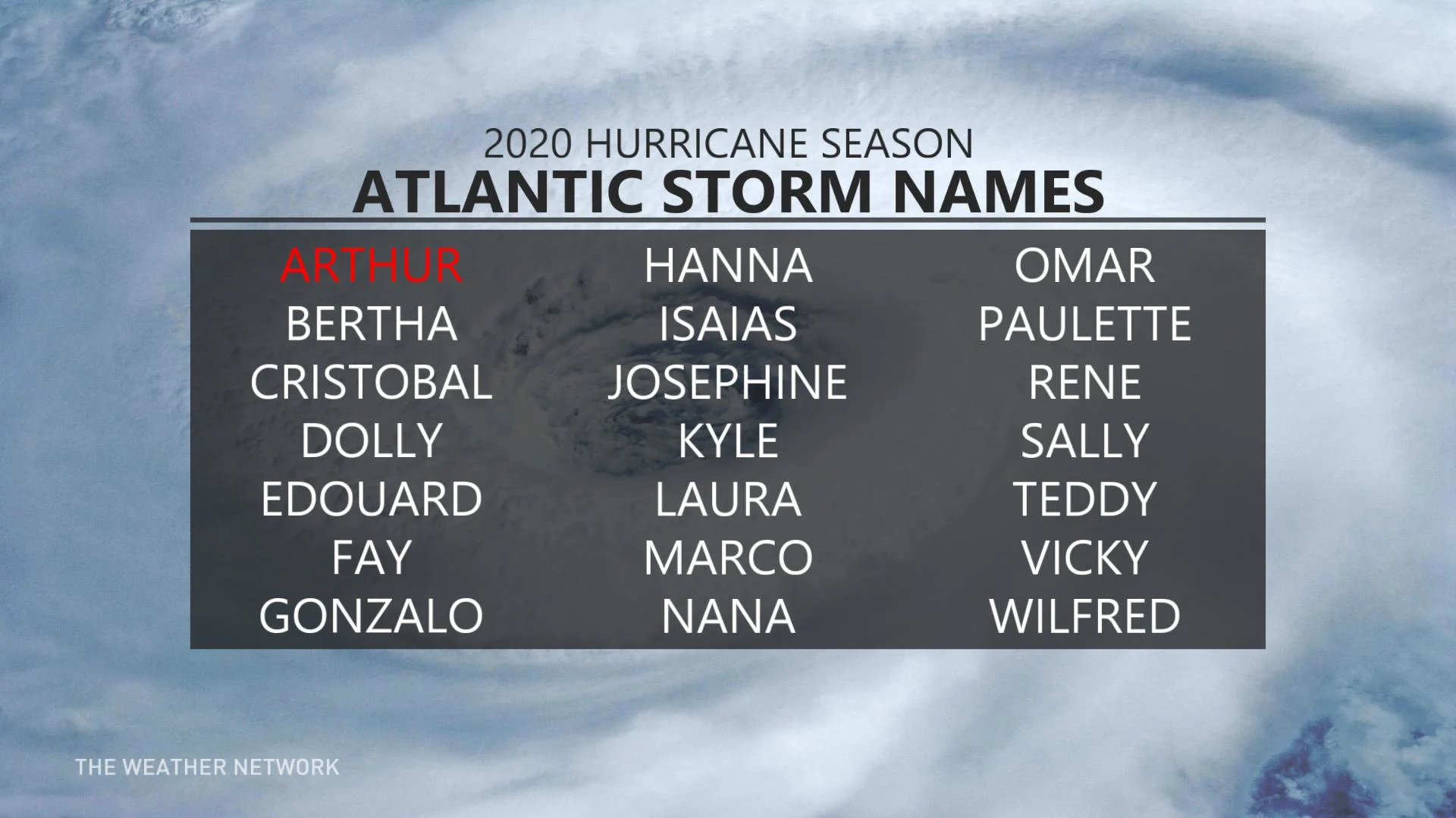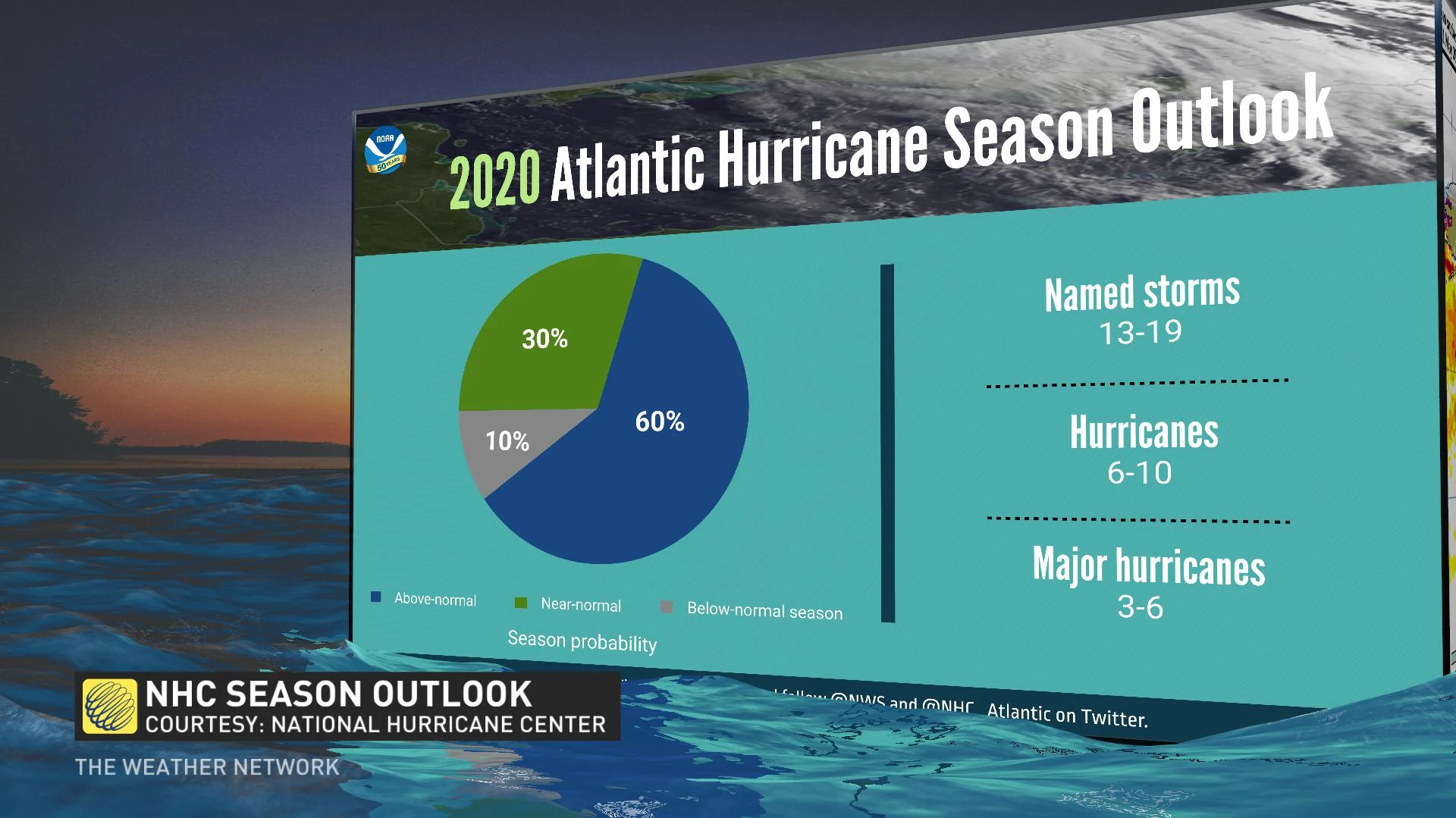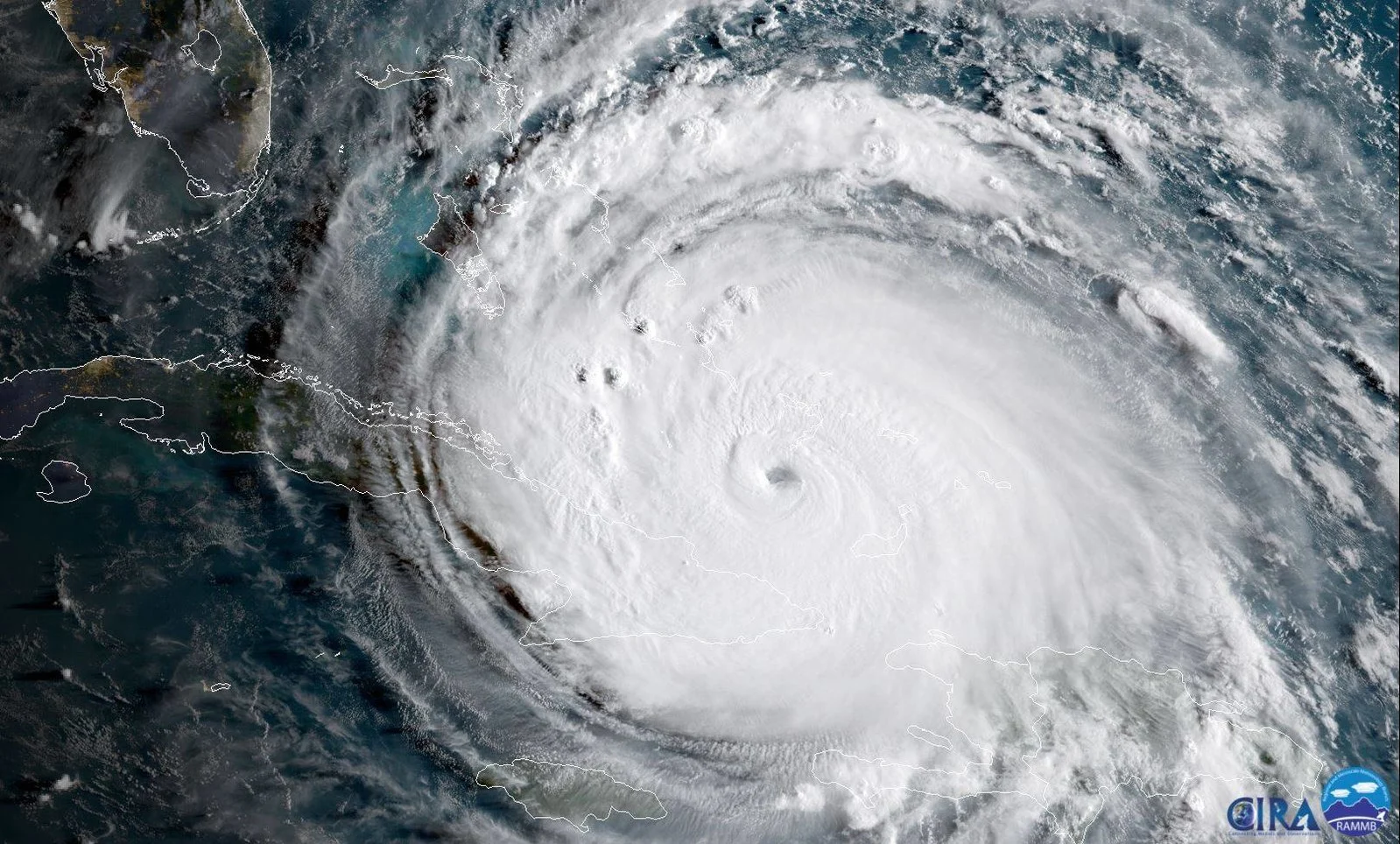
The reasoning behind hurricane names and why some get retired
The naming of hurricanes is a very rigorous process, with set lists for every six years before they start repeating.
With the number of hurricanes that develop every year, you may be wondering how names are categorically determined each season, as the alphabet is quite extensive.
Wonder no more. There is a scientific and thorough process involved in selecting names, including the decisions on when to retire a name.
The U.S. National Oceanic and Atmospheric Administration is predicting an active Atlantic hurricane season this year, with 13-19 named storms, of which, 6-10 are expected to achieve at least a Category 1 status. The 2020 season officially begins Monday, June 1, but there have been two-named storms already, Arthur and Bertha.
RELATED: U.S. predicts above-average Atlantic hurricane season
SHORTER NAMES FAVOURED FOR HURRICANES
According to the National Hurricane Center (NHC), it tends to favour shorter, more distinctive names because they are quicker and less prone to error than older, more awkward latitude-longitude identification procedures. This tactic is especially critical for exchanging detailed storm information between hundreds of widely distributed stations, coastal bases and ships at sea.

A list of the 2020 Atlantic Ocean storm names.
As well, using names that can be memorized quickly greatly reduces confusion when two or more tropical storms occur at the same time. For example, one hurricane can track slowly westward in the Gulf of Mexico, while at exactly the same time, another storm can trek rapidly northward along the Atlantic coast.
"In the past, confusion and false rumors have arisen when storm advisories broadcast from radio stations were mistaken for warnings concerning an entirely different storm located hundreds of miles away," the NHC said.
WHY DO SOME NAMES GET RETIRED?
Despite the NHC releasing predictions and announcing the list of names for the season, it does not control the naming of tropical storms. Instead, a strict procedure is in place, launched by an international committee of the World Meteorological Organization.
For Atlantic hurricanes, a list of names is created for each of six years, with one list repeating every seventh year. The only time a change occurs is if a storm is so deadly or costly, using the name on a future storm would be inappropriate and insensitive, according to the NHC.
"If that occurs, then at an annual meeting by the committee (called primarily to discuss many other issues) the offending name is stricken from the list and another name is selected to replace it," stated the NHC.

But there is an exception to the retirement rule. Prior to 1979, the year of the first permanent six-year storm name list, some names were just simply not reused. For example, in 1966, Fern was swapped for Frieda but no reason was cited.
For a full list of retired names, click here.
HISTORY OF HURRICANE NAMES
For hundreds of years, many hurricanes in the West Indies were named after the particular saint's day on which the storm formed. For example, there was Hurricane Santa Ana, which hit Puerto Rico with exceptional force on July 26, 1825. There was also San Felipe (the first) and San Felipe (the second), hitting Puerto Rico Sept. 13, in 1876 and 1928, respectively.
In his book Hurricanes, written on the major tropical storms in recorded history including mentions of numerous hurricanes named after saints, author Ivan R. Tannehill recounted Clement Wragge, an Australian meteorologist who began assigning women names to tropical storms before the end of the 19th century.

Geocolour image of Hurricane Irma from September 2017.
During the Second World War, this practice became widespread in weather map discussions among forecasters, especially army and navy meteorologists who tracked the movements of storms across the Pacific Ocean. In 1953, the United States stopped naming storms by a phonetic alphabet, replacing it with an international phonetic alphabet. That year, the U.S. started using female names for storms.
The process of naming hurricanes entirely after women ended in 1978, when men were included in the eastern North Pacific storm lists. A year later, male and female names were contained in lists for the Atlantic and Gulf of Mexico.
Thumbnail is a satellite image of Hurricane Dorian, captured in September 2019.
Source: National Hurricane Center






